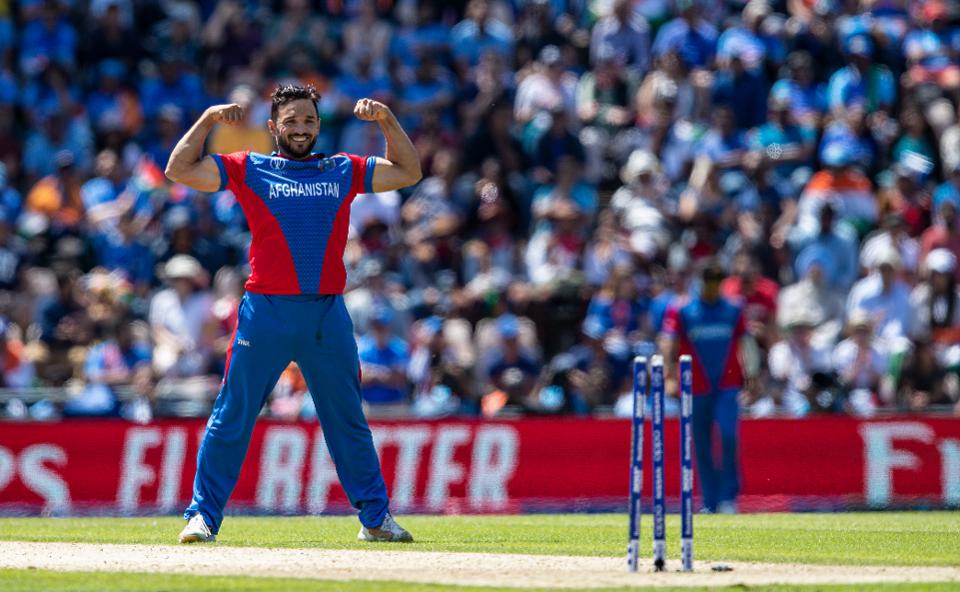Let us conduct a thought experiment.
I want you to join me in imagining a governing body of a global sport (let’s, for the sake of argument, call it cricket), whose only thought is for the well-being of all its members and stakeholders, always seeking to ensure that the passion and commitment the game generates is both fully rewarded at all levels and employed to ensure its long-term future.
Such a body would have clearly-articulated plans, designed to promote the sport’s development, to sustain its appeal to the existing masses of players and spectators and to introduce it to new ones.
Such a body would design its schedules to ensure that its world championships, for both sexes and across all formats, matched a long-term vision in which, over time, increasing numbers of member nations were able to compete at the highest level, and where those events with the greatest prestige received the greatest international attention.
In such a system there would be realistic qualification processes with global, regional (and where appropriate, sub-regional) cycles of qualifying tournaments, so that the opportunity to progress through improving performances on the field was not merely a marketing slogan but something tangible, a way of raising the sport’s profile in its newer territories.
Such a body would have undertaken research to establish the optimal physical and mental demands which can be placed on elite athletes and would have designed its international schedules accordingly, with matches, training programmes, travel and down-time carefully balanced to ensure that overload and breakdown were avoided; all members would be expected to respect these norms and implement them in their own planning.

The financial resources of such a body would be deployed for the benefit of all, not merely to give the lion’s share to those with the loudest voices and the greatest power: the disbursement system would incentivise behaviour which supported the global development of the game and punish that which tended to undermine it.
So member nations would be encouraged through financial incentives to help their smaller, less well-developed regional neighbours, by admitting them at appropriate levels to their domestic competitions, by supporting player development through regional academies, and by investing in the improvement of their infrastructure, from grounds and other facilities to governance.
In such a body the lessons of history would have been learned, so that the collective will of the majority would be strong enough to stand up to the bullying and the blackmail of those who sought to hijack the global game for their own national or personal benefit, and the constitutional arrangements would be in place to ensure that no individual member, or cartel of members, could be in a position to abuse their power at the cost of the game’s global well-being.
You may call me a dreamer, but I’m not the only one.
In point of fact, the cricketing world did once, within living memory, have a structure which had more in common with that paradisaical vision than you might think.
Between the late 1990s and about 2010 the ICC pursued policies which, while far from perfect, did tend in that direction: there was a rapid expansion in membership; the Global Development Program, based on the creation of five regional organisations, was instituted, followed by the establishment of the High Performance Program for the leading Associates; the 50-over World Cup was expanded from nine participants in 1992 to 16 in 2007; the first-class Intercontinental Cup was introduced, followed by a World Cricket League which quickly expanded to eight divisions; there were regional championships which were open to all member-nations; there were regional youth tournaments and, in some regions at least, regular academies to support the development of the most talented players from emerging countries.
There were, to be sure, some serious flaws in this system; most important, the funding of the Global Development Program was skewed from its outset, the BCCI having insisted, reportedly backed up by a threat to pull out of the World Cup if it didn’t get its way, that its client states in the Asian region should be guaranteed 50% of the funding.
But even that demand revealed a degree of concern for emerging nations within its sphere of influence which has been sadly lacking during the decade in which that promising set-up has been systematically demolished.
One of the most profound ironies in the history of international sport is that it was precisely the success of the development programme which led to its destruction: when Ireland beat Pakistan in the 2007 World Cup and the Pakistanis were, like India, eliminated at the group phase, cricket’s masters took fright, and resolved that This Must Never Happen Again.
That perceived debacle planted the seed of the 10-team, preferably all-Full-Member, World Cup, where television revenues would be guaranteed by a schedule of at least nine matches for all the top nations regardless of their performance.

And soon afterwards we had the BCCI’s out-of-hand rejection of the entirely reasonable recommendations of the Woolf review into the ICC’s governance and financial arrangements, followed in January 2014 by the attempted coup in which India, England and Australia sought to redistribute the funding for their own benefit and ensure that they hosted all the most attractive global tournaments.
The most pernicious features of that outrageous putsch may have been reversed but we are living with its consequences still, and the ICC’s grants allocations have been increasingly dedicated to taking from the poor and giving to the rich in a classic reverse Robin Hood manoeuvre which parallels that in the global economy since the 2008 crash.
So it should come as no surprise that the ICC’s plans for the 2023-31 rights cycle are designed to further benefit the Few at the cost of the Many.
Apologists for the proposal will tell us that maximising ICC income from the sale of the rights to its global events will ensure that there is more money for everyone, a siren whisper which should be met with a deafening global chorus of ‘Yeah, right!!!!!’
For nothing in the conduct of the ICC and its masters over the past decade gives the slightest indication that they have any real commitment to anything other than their own narrow, selfish interests. And there is not the merest hint that that is likely to change any time soon.
Keep up with news and events from cricket’s new world on our Facebook and Twitter pages.
Looking for audio content on the emerging game? Add the Emerging Cricket Podcast to your favourites on Apple, Spotify and Podbean.







